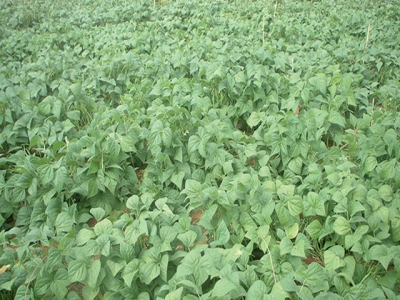Planning for the planting season

Growing vegetables involves multi-tasking. I covered the importance of getting the timing right in my previous article.
Beans is a suitable crop for a time when there is surplus labour. Photo: Bill Kerr
This week, I want to look at another neglected aspect – planning.
Many farmers have only a rough plan of what to grow in the coming season; they rarely go into the details. Most plant several different crops.
This may be for crop rotation, to spread the risk of a low price on one commodity, or some other consideration, such as making more productive use of farm workers.
Let’s look at labour. Because of the cost of wages, many farmers today are keen to reduce the need for labour as far as possible. However, to do so requires careful planning. Start by creating a spreadsheet showing each day of the year.
List every crop you plan to grow. Taking your time, carefully work out when every operation is to take place and how much labour will be required. This includes planting, spraying, harvesting, hoeing and all the rest.
When you’re finished, pencil in the number of labour units required for each process on the relevant day/s on the spreadsheet.
This process will become easier as your records of planting and harvesting dates grow (assuming you don’t already have such an archive). Also, your calculations will become more accurate over time.
After doing this for each crop, tally and record the number of labour units needed each day. Ideally, the figure should be approximately the same for each day, but this is unlikely to be achieved first time round.
Beans and better labour usage
Use the draft to check for cases where a high labour requirement overlaps more than one crop or operation.
This is where you need to move planting dates to ensure a more uniform use of labour.
When there is a significant imbalance in labour requirements, it may be practical to switch to another crop to ensure a more uniform spread.
There might also be occasions when there is little or no work to be done. If this happens, consider planting beans so that they can be picked at this time. Beans take about 60 days from planting to harvesting. A good deal of labour is then required for three weeks.
Many farmers do not plant beans due to the high labour requirement, but you’ll have made time for this.
Because of others’ reluctance, the market price is usually quite good, so it could really be worth your while. In any case, this method of labour determination will eliminate nasty surprises and help planning.
I often visit farms where, for a time, labour has been in short supply. As a result, various tasks are delayed.
In the case of weeds, this may lead to a lower yield. In addition, more work is required when the weeds are larger. All of this can be avoided if you know well in advance how much labour is required each day.
Plan all aspects of production
I’ve discussed using a calendar for planning labour requirements. The same method can be used for planning pesticides, seed, seedlings, fuel, packing material and so on. It will also be a great help when drawing up a budget for the year.
Finally, knowing what you will require well in advance can help you negotiate a better deal, as one big order will invariably mean a higher discount.
This does not necessarily mean you have to stockpile; you can make a deal for a series of forward orders. Knowing the business is in the bag, your supplier may be willing to offer you a discount.
Get into the habit of keeping records
If you have not been keeping detailed records, start with a ‘page-a-day’ diary on your desk and record when each crop is planted, fertilised, sprayed and harvested – and the labour used for each activity.
Do this daily before shutting up in the evening or first thing in the morning. Once you get into the habit it becomes easy.
The raw data can then be used for creating spreadsheets for the following year.
Related news
Tools

Phối trộn thức ăn chăn nuôi

Pha dung dịch thủy canh

Định mức cho tôm ăn

Phối trộn phân bón NPK

Xác định tỷ lệ tôm sống

Chuyển đổi đơn vị phân bón

Xác định công suất sục khí

Chuyển đổi đơn vị tôm

Tính diện tích nhà kính

Tính thể tích ao



 10 new fruit trees and edible vines for…
10 new fruit trees and edible vines for…  10 new vegetables and herbs for your garden…
10 new vegetables and herbs for your garden…